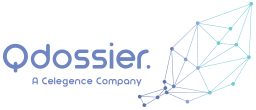Lean and right first time content creation and electronic submission management
Scope
Qdossier gave a comprehensive and concise overview of pharmaceutical development; the purpose of regulatory affairs; details about the regulatory landscape and registration procedures and the content of an ICH CTD, referencing the corresponding ICH guidelines and regional guidance. In addition, Qdossier advised them on the regulatory authoring style (factual for facts and narratives for scientific evaluations), helped them structuring and organizing the regulatory documents and managed the eCTD publishing and submission of the eCTDs for the initial MAA and follow-up sequences. Qdossier also contributed to the Scientific Advice and Pre-submission meetings.
Transforming a research team to a regulatory team
A major challenge was the change in attitude and authoring styles between a research document type and a regulatory document type. The latter consists of factual data, primarily in Modules 3, 4 and 5 and critical scientific evaluations like the nonclinical and clinical overview and the pharmaceutical development and validation evaluation in Module 3.
Another challenge was to capture all the knowledge they gained during the pharmaceutical-, nonclinical- and clinical development in analysable data sets and critically evaluate the findings.
The third major challenge was the lack of an eDMS to track documents during authoring, review and internal release.
Project description
The project started with a workshop where Qdossier trained the authors, reviewers and releasers on the requirements to be fulfilled for (1) a marketing authorization in general and (2) an eCTD for a biosimilar in particular. We started with the purpose of regulatory affairs and the management of regulatory procedures. Followed by general aspects concerning the document granularity, naming convention and document templates, using Qdossier’s Dossplorer™ as a guide. We zoomed in on the use of document templates (page layout, headings and headers), authoring styles (factual and direct as compared to gobbledygook[1]) and proper use of MS-Word features. A concise, active authoring style, omitting obvious references and repetition, is so much easier to comprehend. When MS-Word features are applied properly it results in eCTD-ready documents upon rendering to PDF. This prevents or reduces the need for post-finalization publishing. The correct document granularity and naming, allows to produce standalone documents that can be used for multiple purposes and can be finalized independently from other documents; so less effort on the critical path.
Qdossier worked with the scientists to evaluate the past and future production process its impact the extrapolation of the nonclinical data and clinical data to the marketing situation. Based on the definition of critical to quality attributes and critical process parameters, we were able to provide the documentation to assess the impact. We were also able to prepare a post approval change management protocol for a foreseen major variation.
Qdossier provided the company with submission document templates of a future-proof document granularity and naming convention. These documents were prepopulated with header information specific to the content (not context), headings, tables and captions where possible and ‘hidden’ regulatory guidance.
The eCTDs were created using Qdossier’s hosted environment of an eCTD building tool. Source documents were exchanged through SharePoint, SFTP and eMail (less preferred). Qdossier published the documents to the right granularity, document naming and eCTD‑readiness. Qdossier’s Dossplorer™ was used for review and approval processes of the eCTDs before dispatch to the client (by SFTP and/or Eudralink) and/or submission to the health authorities by web-traders or gateways.
Customer benefits
The customer learned and understood the importance of a stable production process and how to address changes in that production process. They were able to create standalone eCTD-ready documents, where the post-finalization publishing was limited to hyperlinks pointing to other documents. As a result, documents could be used for multiple purpose (e.g. other regions, products and application types).
Qdossier created transparent eCTD sequences using Qdossier’s hosted environment and shared these using Qdossier’s Dossplorer™ with the customer and their third party contributors. As a result, there was no exchange of eCTDs required before Qdossier customers could see the eCTDs; and therefore no different versions floating around. Using Dossplorer, draft sequences could be reviewed and comments could be added. These sequences could be seen in context of the entire lifecycle and even across countries and products. The proper lifecycle attributes allowed for a clear and transparent current view, where obsolete document were no longer polluting the current status.
The customer was able to meet all timelines.
[1] language that is meaningless or is made unintelligible by excessive use of technical terms

